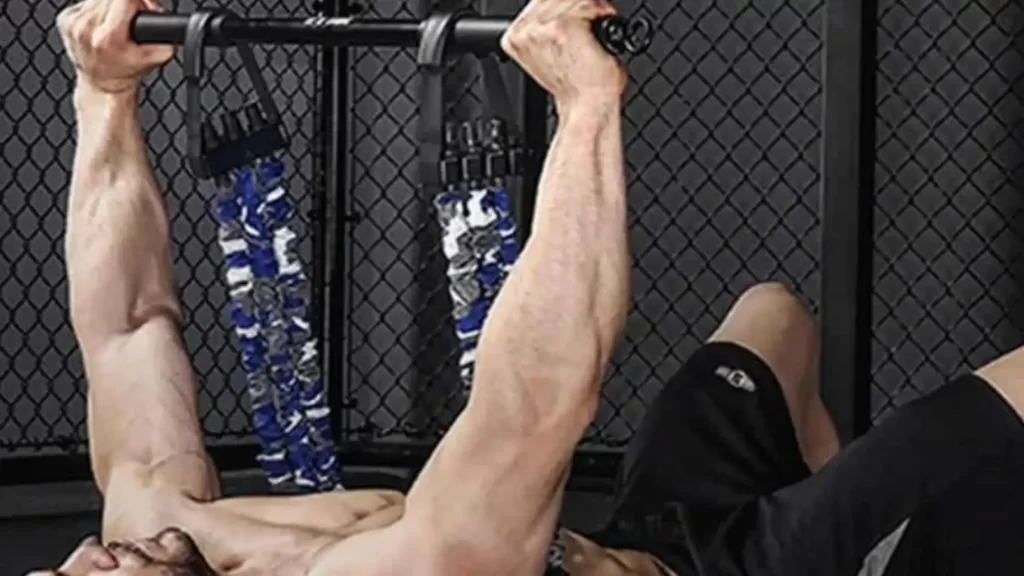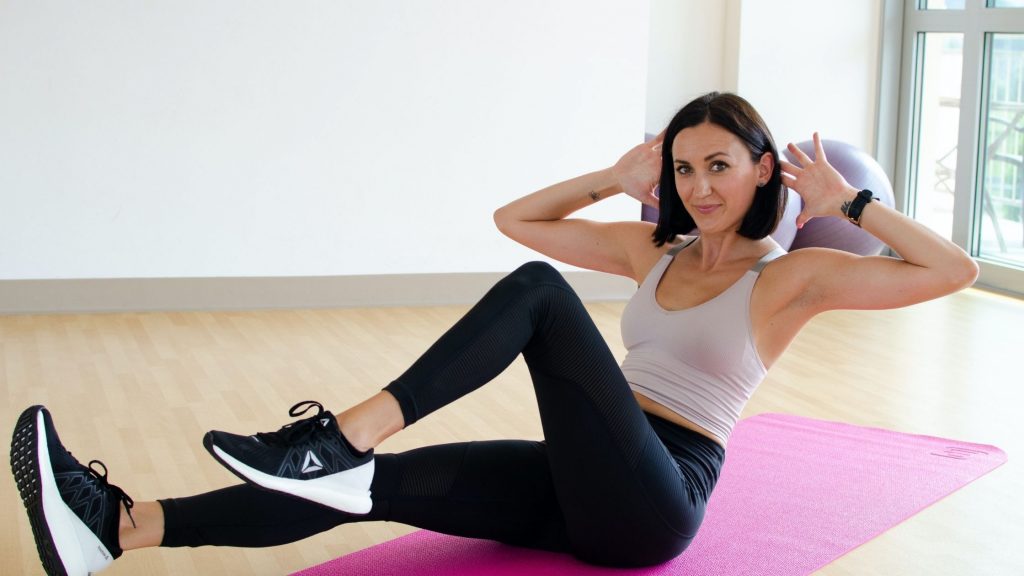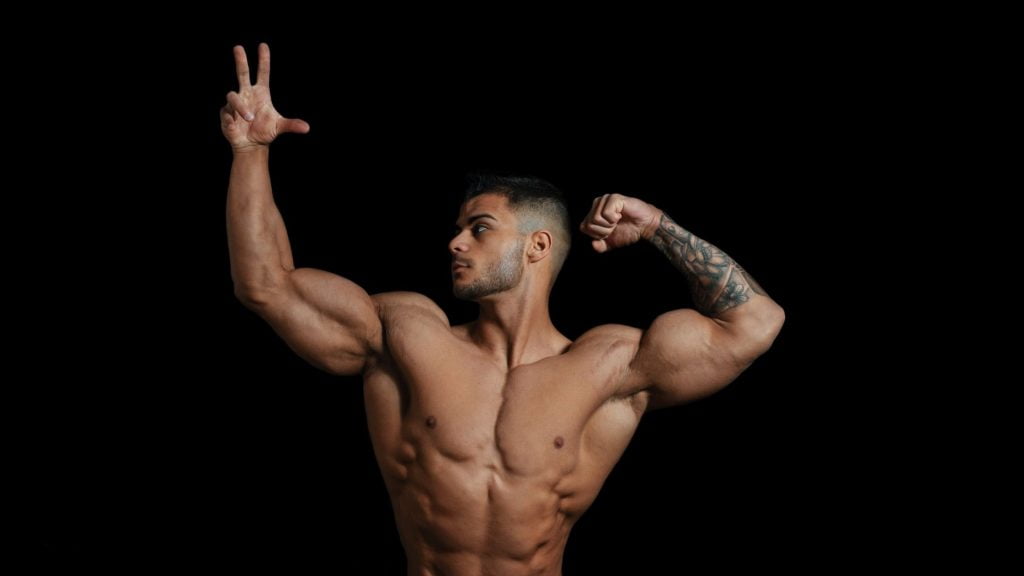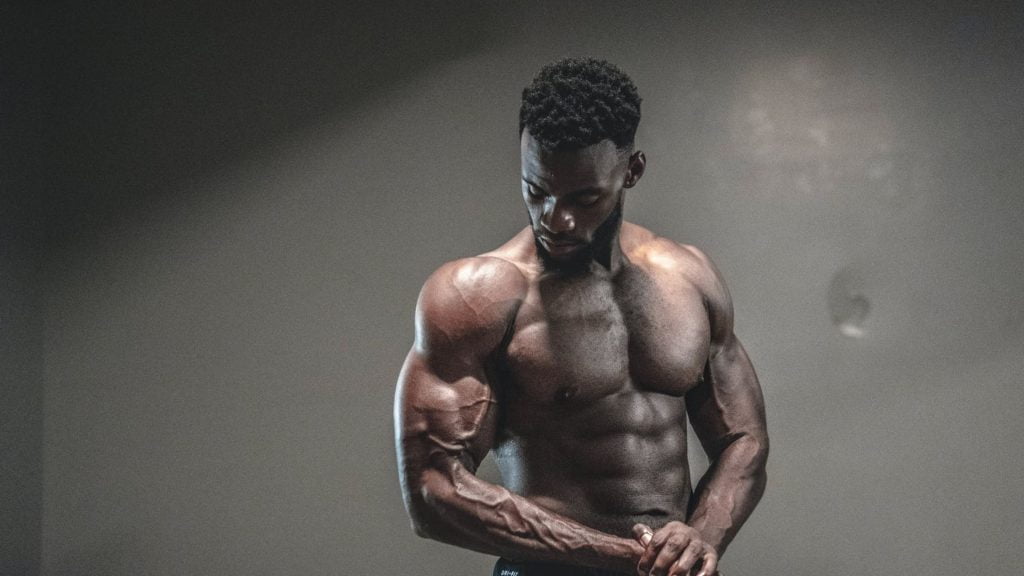Face pulls are a great way to work up your shoulder muscles. It’s a great way for both beginners and pros who are looking to add something new to their routine. Here are some Face pull benefits & Techniques you should know about.
Workout for your rear deltoids and trapezius muscles helps to improve the posture while lifting heavy objects. But you are doing it in the wrong posture results in injury for the back. The other names of face pulls are high row, rope pull, and rear delt pull.
Many people determine that the primary focus of working the shoulder muscles will be a push day at the gym. The face pull is a strength-building isolated exercise. Shoulder injuries are more prone to occur during the shoulder press or lateral raise if the weights are hefty.
Face pull helps to improve your posture and strengthen your shoulders.
IN THIS ARTICLE
Face Pull Benefits :-
1. Face Pull Benefits for shoulders health and strength
One of the benefits of face pulls includes improving your shoulder strength. When performing a variety of chest workouts, shoulders are frequently dragged forward.
This circumstance, however, can be prevented with the use of face pull. It aids in the stability and squareness of the shoulders.
2. Face pull benefits to Improves the posture
This exercise will enhance your posture by pulling your shoulders back and holding them retracted. People with slouched shoulders will benefit from this.
3. Face pull for shoulders and back
While this exercise serves to strengthen your shoulders, it also affects your back and upper shoulder. When you achieve such a level of total development, you will notice a difference in your overall muscle mass.
ALSO READ: Cable Back Workout – 10 Useful Exercises For Bigger & Stronger Back
4. Best for beginners
This exercise is best for beginners who want to train their shoulders and the face pulls techniques is best to target your rear deltoids. Even if you start with a smaller weight than normal, you’ll feel the muscle being worked as long as you use the proper technique. All of the shoulder muscles must be worked, and the face pull is an excellent technique to do so.
5. Awesome warm-up or maybe finisher exercise
Whether you’re using a band face pull or a cable face pull, the face pulls are a wonderful way to warm up those muscles before a heavy shoulder day. If you wanted to execute a challenging finisher and truly work your rear deltoids, do as many reps as you can with a smaller weight to feel the burn and receive the most benefits.
Face pull benefits & Its variations
1. Band pull- parts
All you’ll need is a resistance band to get started.
Sets of band pull-parts can be done between sets of bench press or push-ups to break up extended periods of sitting. exercise before any upper-body workout.
How to do-
With an overhand, shoulder-width grip, hold a resistance band. Raise your arms in front of you, nearly. If you’re looking for a good warm-up before any upper body workout face pulls are a great option.
Open your arms with your shoulders heading at your back. Slowly return to the starting position and repeat the process.
By adjusting the angle of your arms and stretching the band diagonally across your chest rather than horizontally,
you may work your upper back from different angles.
2. Wide grip seated cable rows Face pull benefits
While bent-over barbell rows are great for the mid trap, rear delts, and rhomboid muscles, they can be difficult for the lower back. Seated cable rows are exactly as effective as standing cable rows, but they are significantly easier on the lower back.
Face pulls can be done with parallel, long, and straight bars.
How to do –
Sit on a bench with your knees slightly bent and feet on the footrest. Use an overhand grip at shoulder width.
With a 90-degree between your shoulders and elbows pull the bar into your chest with your arms bent. Make sure your back is straight.
Slowly release your arms and repeat.
3. Dumbbell reverse flys Face pull benefits
This is a great workout for home lifters who don’t have access to cable equipment that allows them to practise face pulls.
How to do-
Grab two dumbbells that are light to medium in weight.
Bend your knees, tighten your core, and lean over, maintaining your back flat, until
your torso is slightly above parallel to floor.
Slightly bend your elbows while raising your arms as high as you can on both sides.
and compress your rear delts.
And Face pull benefits to Lower the weight gradually and repeat.
4. Cable reverse flys Face pull benefits
Dumbbell reverse flyes face pulls are a good exercise, but they don’t keep your muscles engaged all of the time. Because your muscles must work over the entire range of motion when using cables, they may be more effective.
How to do-
Place yourself in the middle of a cable crossover machine.
In your right hand, hold the left handle, and in your left hand, hold the right handle.
With your arms extended out in front and your palms facing inwards.
Bend your arms and then straighten them.
Draw your shoulders back and down.
Your arms should be slightly behind your shoulders when you open them in a standard face pulls form.
Return to the beginning location and repeat the process.
5. Band face pulls
Suppose there is no machine, no problem. Face pulls can also be done using a resistance band. Just make sure your bar is well-anchored and powerful. A severe injury could result from a broken band or anchor point.
How to do-
Connect a head-high anchor point to light to a medium-strength resistance band.
In each hand, hold one end of your band.
Step back and into a staggered stance with your arms out in front of you to tension the bend and create a stable base.
Bend your arms and pull your hands back to your head as if you were trying to stick your thumbs in your ears while keeping your elbows up.
Extend your arms and repeat.
6. Bench shrugs face pulls
It’s very effective at hitting the mid-traps and rhomboids. When you keep your arms straight, you can concentrate solely on bringing your shoulders back and hitting your mid-traps and rhomboids h reader than ever before.
How to do-
On an exercise, the bench sits at an angle of 45-degree with your face down on the bench and dumbbells in each hand.
Without bending your arms shrug your shoulders together and turn your waist and hands inwards. Make sure your arms are free from your shoulders.
Hold this posture with contraction for three seconds.
Repeat the process with the dumbbells or barbell down to the floor.

Common Mistakes With Face Pulls
1. Excess weight on the machine
Make sure not to put too much weight on the machine, as it will prevent you from doing the manoeuvre correctly.
While performing the face pull, don’t focus on any other muscle group other than rear deltoids as these are a smaller muscle group; don’t go too hard on them as shoulder exercises.
2. Poor form of face pull
This exercise should target the muscles in the area between your shoulder blades. When you begin, make sure your elbows do not point downwards, and if you pull the rope toward your chin or neck, make sure your elbows do not point downwards. It’ll probably feel like it’s working more in your back or perhaps your biceps.
When performing the proper exercise, make sure to verify your form.
3. Using a small length of attachment
If you’re using a resistance band you won’t notice it. However, if you’re using a cable machine to execute face pulls, you should be aware of this. The machine’s rope attachment should be long enough. A decent space is needed between you and the machine when you grasp both ends with your hands. You might not receive the complete range of motion if you utilize a smaller machine. You can either use a larger attachment or just attach two ropes to resolve this problem.
4. Improper grip
Internal rotation of the shoulders can be caused by an overhead grip. To get the most out of the rope attachment, grasp it from underneath with your thumb backwards.
ALSO READ: Push Ups For Biceps – Technique, Benefits And 10 Variants
Points to keep in mind while doing face pull exercise
Pulling to the chin or neck area is the main goal.
Spread the hands apart a little as you pull back and add the isometric hold.
Make sure to squeeze your glutes and abdominals to tighten your abs.
As you pull back, exhale.
Don’t make this an ego exercise; choose a degree of resistance that allows for flawless form.
As part of your warm-up and/or upper-body workout, perform 3-4 sets of 8-12 quality reps.
Take help from a partner to ensure that you maintain proper alignment with your chin tucked.
If keeping proper posture while standing is too difficult, consider executing them in a lunge stance or a half-kneeling position. Make sure to do equal rep on both sides.
What the face pulls muscles worked?
The face pull is a shoulder and upper back exercise that improves the key muscular groups. By doing face pulls exercises daily, mainly the rhomboids, trapezius, and deltoids, all are targeted. Rhomboid muscle – The rhomboids are placed between your scapulae and under your middle trapezius.
Pull your shoulder blades together just like the mid-traps. Rhomboid major and minor are the two rhomboid muscles, and both are engaged in face pulls.
Trapezius- The trapezius is a big, diamond-shaped upper back muscle. The function of three sets of fibres is determined by their alignment. In a movement known as depression, the lower traps pull your shoulder girdle downward.
The elevation is a movement in which the upper fibres pull your shoulder girdle upward. Retraction occurs when the middle fibres pull your scapulae, or shoulder blades, back and together.
Deltoids- The deltoid muscles are divided into three groups: anterior (front), medial (side), and rear posterior.
Your upper arm is controlled by the three deltoids working together. During face pulls, the posterior deltoids are very active.
Can face pull replace lateral raises?
The lateral raise is one of the greatest cable face pull-ups alternatives, and it provides the user with various advantages, including shoulder strengthening, enhanced mobility, and flexibility. Let us see how it is performed.
Stand straight with your back stiffed your feet shoulder-width apart and knees slightly bent. Your dumbbells should be kept in reach on both sides.
Slowly raise the weight out to the side, keeping the core engaged. To avoid injury, slowly lower back to the beginning position in a controlled manner after your arms have reached parallel.
Your elbows should be bent on both sides.
Repeat.
Should I do face pulls every day?
Push exercises like face pulls for chest, triceps, shoulders, and even abs are commonly performed by most persons who exercise. Face Pulls are good for strengthening the rotator cuffs’ external rotation, whereas Trap Raises work the lower traps. Yes, you can do face pulls every day.
Bottom Line
FacFace pull benefits to target muscles gain muscle and strength. It’s now possible to classify it as a complex exercise because it engages a variety of back muscles. It’s also excellent for isolating the back muscles.
During the facial pull, these muscles retract and engage, which is crucial for pushing actions. Please read above in detail about the benefits of face pull. Make sure to include the face pull in your workout programme if you want to take your training to the next level. This fantastic technique can help you increase your compound lifts, enhance your posture, and round out your muscular development.
Face pull benefits to make your shoulders more strengthened and have better posture.












